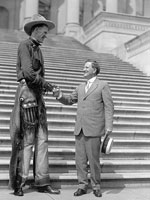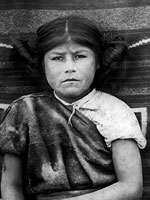One could spend an entire lifetime studying the mythic and historical American West, but with your unit coming up, maybe it’s best to get you right into some resources that you can implement in the classroom.
First, check out Exploring the West, a project of the Bill Lane Center for the Study of the North American West. They have three units available on their website, one of which is on the role of cowboys in the historical myth of the West.
Another good resource is PBS’s New Perspectives on the West. The website has a number of good lesson plans and resources, including Making Myths: The West in Public and Private Writings. If you have time, it might be worth browsing around on the New Perspectives website—it’s full of rich material.
Debunking the Myth of the West is a useful unit plan for your purposes. A project of the Yale-New Haven Teachers Institute, the plan includes three lessons and a guide to resources. And the Library of Congress’s American Memory page also has these great resources on the West, some of which explore the creation of a mythic Western past.
The Gilder Lehrman Institute on American History explores many facets of the American West. One page directly addresses your question on myth by examining the iconic Buffalo Bill. It also contains a teaching module that has complete lesson plans with primary and secondary sources listed.
Finally, if you have time to do some reading, the University of Virginia has Henry Nash Smith’s Virgin Land: the American West as Symbol and Myth posted as a hypertext online. It also hosts a companion page on the life of Buffalo Bill Cody, exploring the myth of the West through Buffalo Bill.

